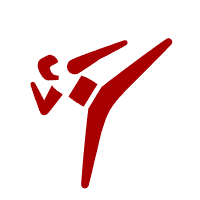
Chinese art since the 1911 Revolution. Compared with ancient art, its social and cultural environment, objects and authors, category and form, nature and status have all undergone profound changes. Just like the transitional, contradictory, and vigorous nature of the entire Chinese modern culture, Chinese modern art is also full of characteristics of the alternation of the old and the new, the blending of Chinese and Western, and the development of change.
Chinese modern art has developed under the background of inheriting traditional culture and introducing western culture. Although Western culture including fine arts was introduced as early as the Ming Dynasty, the large-scale introduction was after the Opium War. Imported into Western culture along with the gunboats of the invaders was a characteristic of the second half of the 19th century. In the Chinese Economic Reform Movement of 1898 and the Revolution of 1911, China’s advanced figures gradually took the initiative to seek a way to save the country from the West. By the May Fourth Movement, it became the main trend of Chinese modern culture. Faced with the collapse of the feudal system, weak national capitalism, imperialist predation, and various Western thought trends, Chinese revolutionaries and people chose Marxism and used it as a guide to carry out the revolution of new democracy and socialism. The development process and basic characteristics of modern Chinese art are mainly determined by this historical thread. The conflict between traditional culture and foreign culture, the contradiction between the requirements of the times and revolutions and the laws of art itself, the mutual restriction of enlightenment needs and the theme of salvation, etc., all have an impact on the development of art around the above-mentioned main lines. All the twists and turns of modern history and culture and social movements including revolutionary struggles can be heard echoes in the valley of modern art.
History development
Chinese modern art can be divided into five stages of development and change: ① the 1911 Revolution to the early 1930s, ② the late 1930s to the 1940s, ③ the 50s to the early 60s, ④ the ” Cultural Revolution ” for 10 years, and ⑤ the late 70s to the 1980s.
Xinhai Revolution
At the beginning of the 20th century, under the influence of various factors such as the Westernization Movement, the Reform Movement of 1898, and the Anti-Qing Revolution, some people with new ideas and overseas students such as Li Ruiqing, Li Shutong, Li Tiefu, Gao Jianfu, etc., set up new art education and stepped out of China. The first step in modern art. Before and after the Revolution of 1911, the number of people who went to Japan, France, Britain, Belgium, and the United States to study fine arts increased dramatically. In 1912, Liu Haisu, Wu Shiguang, and others founded the first new art school (see Shanghai Academy of Fine Arts ), and thereafter, Beijing Academy of Fine Arts (see Beiping College of Art ), Suzhou Academy of Fine Arts, and Wuchang Art School. College, Hangzhou National Academy of Arts (see Hangzhou College of Art ), Shanghai Xinhua College of Art, Zhonghua College of Art, Lida Academy, Guangzhou Academy of Fine Arts, Central University Art Department, and other fine arts or fine arts-based art schools. A group of famous overseas students and artists such as Xu Beihong, Lin Fengmian, Yan Wenliang, Lu Feng, Feng Zikai, Chen Zhifo, Pan Tianshou, Wang Yachen, etc., all devoted themselves to art education, and the art school became a window for the spread of foreign art and the source of the new art movement. The vigorous development of art education is closely related to Cai Yuanpei ’s theory of “replacement of religion with aesthetic education”. In the 1920s and 1930s, the foreign painting movement centered on Shanghai developed rapidly and impressively. Most returned overseas students painted oil paintings, watercolors, and sketches. The art schools also focus on teaching foreign painting as their main course, and various art clubs, seminars, and private studios continue to organize exhibitions and publish publications to introduce Western art. Different factions and opinions often have sharp controversies. The new art team, with young artists as the main force, has sharp ideas, vigor, and courage to absorb, but is relatively naive in theoretical cultivation and artistic skills, and sometimes falls into imitation or imitation. fantasy.
Corresponding to the New Art Movement is traditional art-mainly traditional painting. At the end of the Qing Dynasty and the beginning of the Republic of China, traditional paintings were still authentic with the Qing Dynasty literati paintings that emphasized pen and ink and neglected creation. Before and after the May 4th Movement, Kang Youwei, Chen Duxiu, Lu Xun, Gao Jianfu, Xu Beihong, etc., all criticized imitating antiquity and advocated the reform of traditional painting. Facing the impact of new thoughts, artists of Lin Shu, Jincheng, Shanghai, and Guangzhou have also organized art clubs, recruited apprentices, wrote Wenli, tried hard to line up foreign paintings, and defended the ancient ways. Many traditional painters, such as Gu Linshi, Wu Daiqiu, Feng Chaoran, Xiao?, Xiao Junxian, Tang Dingzhi, etc., are only obsessed with painting and do not pay much attention to ideological disputes. The Shanghai-style painters who were the only ones in the painting circle in the late Qing Dynasty passed away at the turn of the century and the Revolution of 1911. Only Wu Changshuo was famous in Shanghai before 1927. Qi Baishi and Huang Binhong, who were innovatively exploring within the traditional painting standards, began to emerge in the 1920s. A group of painters is compatible with China and the West, trying to reform Chinese painting, but their achievements in practice are not as influential as their reform proposals.
The 30s
After the outbreak of the War of Resistance Against Japan, the first theme of the Chinese revolution and the lives of the Chinese people was promoted to save the nation from the War of Resistance. The national cultural and artistic circles united in the wave of mobilization and propaganda against Japan and played a pioneering role. The All-China Art Association Against the Enemy, the All-China Woodcut Association Against the Enemy, and the All-China Comics Association Against the Enemy were established one after another. Patriotic painters have formed propaganda teams and working groups to go to the streets, rural areas, and front lines, using paintbrushes to arouse people and praise Killing enemy soldiers and exposing the crimes of the aggressors, mutual academic differences give way to common struggle goals. Large numbers of long-term living in big cities.
The artists in the studio approached the working masses during the anti-Japanese propaganda or the shifting of displacement and walked out of the ivory tower of art for the sake of art. Their thoughts and emotions have changed, and their artistic creation has also taken on a new look. Faced with an unprecedented wide range of objects, the art world has launched discussions on the issue of popularization and proposed that in order to educate and awaken the public, it is necessary to adapt to the public’s acceptance conditions and appreciation habits. A large number of artists gathered in Wuhan, Chongqing, Chengdu, Guilin, Yan’an; art schools in Shanghai, Beijing, Hangzhou, Nanjing, and other places also moved to the rear. This special environment brought difficulties and contradictions, and also provided art. Conditions for the promotion of social exchanges. The geographical location and the barrier of war have caused artists to leave the center of modern art, such as Shanghai, Beijing, and other metropolises, but Bashan Shushui showed them the magnificent natural beauty, and also provided them with a visit to the southwest and northwest. Opportunity, many painters have gained a new life in art. The ideological atmosphere of the Anti-Japanese War increased the patriotism and national cultural concepts of artists, which inspired them to rediscover the art heritage of the motherland. Chang and his party on the Dunhuang frescoes copy to Chang Shu-hung was established, led by the Institute of Dunhuang art, Wang Ziyun, Ink, and so on Northwest ArtThe inspections of cultural relics have all gone through arduous efforts, and various results have been obtained. Most of the artists in the enemy-occupied areas lived in the simple or due and refused to be used by the invaders. Many artists have expressed their patriotism in twists and turns.
The anti-Japanese base areas under the leadership of the Chinese Communist Party trained a large number of painters dedicated to popular revolutionary art under extremely difficult conditions and created a series of works full of life. Especially after Mao Zedong published “Speech at the Yan’an Forum on Literature and Art”, the culture of going to the countryside and serving the workers, peasants, and soldiers became the guiding principles of the art activities of the anti-Japanese base areas. The combination of soldiers, propagandists, and painters became the characteristics of artists. Young painters, students from art academies or art lovers from all over the country, after a short-term study in the Art Department of Yan’an Lu Xun Academy of Arts and Letters and its branches, went to the front and the grassroots to run tabloids, draw comics, carve woodcuts, and print New Year pictures, Established a brand-new relationship with ordinary art viewers, and many accomplished painters such as Gu Yuan, Yan Han, Li Qun, Hu Yichuan, Wang Shikuo, Luo Gongliu, Hua Junwu, etc. emerged. Most of their prints and cartoons have got rid of the imitation of Western paintings, and have absorbed some elements of folk art or traditional art. They completely portray soldiers, farmers, and the new life in the liberated areas, presenting fresh, clear, and simple Features.
After the victory of the Anti-Japanese War, the artists and teachers, and students of art academies gathered in Sichuan and other places were demobilized and returned to various places. The Chinese painting, oil painting, and the exchange of Chinese and foreign art that were in a low state during the Anti-Japanese War began to recover. However, with inflation, the resurgence of civil wars, and the hope of democracy, many painters have joined the ranks of anti-civil wars and anti-hunger, and have no time to quietly discuss and think about art itself. Prints, comics get a new development, the emergence of Li Hua, Huang Xinbo, Zhang Leping, rice cereal, Yang Youn, Zhu has, Liao ice brother, Hua Junwu, etc. to militant works aroused attention.
The 50s to 60s
The establishment of the People’s Republic of China started a new stage of Chinese art. In the early 1950s, society was relatively stable and people wanted to govern. Serving the workers, peasants, and soldiers, letting a hundred flowers bloom, and bringing forth the new to the old has become a unified policy of literature and art. Artists sincerely portray the workers, peasants, and soldiers with joy and praise the new society. The art tradition of the liberated areas, the socialist realism theory introduced from the Soviet Union , and the realism art education represented by the Xu Beihong school are integrated, forming the foundation of the new stage of art. A number of fine arts schools and departments have been newly built across the country. Chinese painting is showing a trend of revival, and fine art creation and debate are also quite active. In 1956, Mao Zedong put forward the policy of “let a hundred flowers bloom and a hundred schools of thought contend”, but the anti-rightist movement in 1957 pointed the spearhead at the cultural and intellectual circles, and serving politics became an overriding task and measurement standard, formulaic and conceptual works Increasingly. In the early 1960s, the literature and art policies were adjusted, and thinking and creation became more active. A group of well-experienced and artistically mature artists such as Lin Fengmian, Pan Tianshou, Dong Xiwen, Fu Baoshi, Hua Junwu, Yang Keying, Luo Gongliu, Li Keran, Guan Shanyue, Wu Zuoren, etc., have created many excellent works and entered Their artistic maturity or peak period. A group of young and powerful artists boldly innovate and create, and attract the attention of the society with their new achievements, such as Shi Lu, Pan He, Zhu Xuanxian, Huang ZhouWait. The categories that had no conditions to develop during the war years, such as architecture, monumental sculptures, arts and crafts, and murals, also developed to varying degrees. Popular New Year pictures, comic strips, and propaganda posters have received full attention, and they have far exceeded the previous ones in terms of the creative team, artistic quality, and publication volume. Art archaeology has made a series of major achievements, and works on art history that strive to study art phenomena with Marxist-Leninist viewpoints continue to appear. But on the whole, the entire art history theory research and current status commentary are mostly influenced by vulgar sociology. Due to a closed and basically negative policy towards Western cultural thoughts, only the Soviet Union and Eastern European countries had contacts with the outside world during this period. Even after the Revolution of 1911, the works that introduced western modern culture and art were no longer published. This is a great influence on art theory and creation. The closedness of the company has a profound impact. In 1964, marked by Mao Zedong’s five instructions on literary and artistic issues, China had reached the eve of the ” cultural revolution .”
Cultural Revolution
The “Cultural Revolution” from 1966 to 1976 was the result of the vicious development of the “Left” guiding ideology and political line in the previous 17 years. In the past 10 years, Western, ancient, and modern Chinese art traditions have mostly been denounced as “entitlement, capital, and repair”, a large number of precious art cultural relics have been destroyed, and a large number of accomplished artists have been imprisoned, persecuted and even killed. Art academies have been closed for a long time, and art journals have been closed for a long time…In the new worship of gods, the depiction of the leader’s image is widely copied and copied like a medieval icon. Mannerism envelops sculptures and paintings. Popular art forms such as New Year pictures, comics, and cartoons, which are highly valued, have become tools for political propaganda. The “Icon” copy movement popularized the basic realistic techniques of oil painting and sculpture. Some artists, such as Shi Lu and Huang Yongyu, who used twists and turns to express depression, injustice, and resistance, were labeled “black painters”. As an important image of human culture in the 20th century, the “Cultural Revolution” art, including its causes, characteristics, activities, influences, and consequences, undoubtedly has profound research value.
1976~1988
The new era marked by opening up and reform began after the Third Plenary Session of the Eleventh Central Committee of the Communist Party of China. Criticism and total denial of the ” Cultural Revolution “, the introduction of modern Western science and technology, culture and art, and the profound reflection on traditional culture constitute a brand-new background for the artistic trend of thought in the new era. In terms of creation, first is the scar art that reviews the catastrophe of the “Cultural Revolution” and truly reveals it, and then is the vernacular realistic art that truly depicts life in rural and remote areas, as well as various discussions on art forms and techniques. Artistic personality gradually recovered, and art theory research was unprecedentedly active, and many new art newspapers and young and middle-aged art historians appeared. After 1985, trendy art, mainly young artists, began to appear. Trendy artists mostly appear in groups, using Western modern art as a frame of reference, with the main purpose of exploring the social and cultural value and modernity of art. Their works are obscure in connotation, pursue critical and philosophical meaning, and have various forms and styles. The art world has different views on new-wave art, but as an attempt, its existence and influence have also attracted people’s attention. Art exchanges between China and foreign countries are becoming more frequent. Artists’ mutual visits, studying abroad, exchanges and exhibitions, academic conferences, etc. are all increasing. Artists have the possibility to quickly understand the state of international culture. With the economic reforms and the development of tourism, buildings of modern style have appeared in Beijing, Guangzhou, Shanghai, and other places. Urban sculpture, industrial design, murals, and modern environmental art have also developed at an unprecedented speed. Art archaeology, the collection and exhibition work of museums and art galleries, and the protection and research of art relics have also presented new prospects. Some art products tend to be commercialized, which has brought about a variety of artistic value, artistic production methods, and various concepts. On the one hand, there are fierce ideological and artistic turbulent changes; on the other hand, management systems and thinking modes that are not compatible with the new situation, the juxtaposition and opposition of the new and the old, radical and conservative, the harmony and contradiction between artistic personality and the social environment, The complexity that constitutes the art formation in the new era.
Reform and opening period
Since entering the new era of reform and opening up, the contradictions between reform and conservative, radical and gradual have become more acute, but the opposing parties are full of conflicts and complement each other. Due to the rise of individual awareness and subject concepts, the exploration of innovative Chinese painting has shown a diversified trend. The penetration of modern aesthetic concepts has given birth to many new types and trends, such as abstract, super-realistic, color, folk-like, penless, and new literati freehand style. Young and middle-aged painters have become the main body of creation, teaching, and scientific research. The content of depiction and expression has also been greatly expanded. In addition to praising natural beauty, depicting social images, and expressing spirituality, various tentative pursuits have also been carried out. The local color and group character also tend to strengthen. Due to external influences and bold thinking and experimentation by innovators, the debate on Chinese painting has once again set off a climax, including the characteristics of Chinese painting, the boundary, the value of pen and ink, and the relationship between reference and inheritance, which have been extensively discussed on a new level. Since the establishment of Beijing Chinese Painting Academy (see Beijing Painting Academy ) and Shanghai Painting Academy (see Shanghai Chinese Painting Academy ) in the 1950s, nearly a hundred painting academies have appeared across the country, such as the Chinese Painting Academy, Jiangsu, Guangdong, Zhejiang, Shaanxi, and Liaoning. Provincial painting academies such as Hubei and Hubei have made active contributions to organizing the creation, research, and sales of Chinese paintings.
Arts Research
The research on modern Chinese art can be divided into Chinese and foreign art history, basic art theory and criticism, and art archaeology. In terms of methods, it can be divided into three types: traditional, foreign, and comprehensive. Due to the instability of the environment, the systematic and comprehensive masterpiece was not able to be carried out until the 1980s, and many results have been achieved. Learning from the achievements and methods of the natural sciences and social sciences of the 20th century in the West to study the history and current situation of Chinese and foreign art, although it started in the 1930s, real progress was only possible in the 1980s. In a word, the Marxist viewpoint and method run through the research, which has become a prominent feature of Chinese art research in the past 40 years.
In the special study of Chinese art history, Chen Sheng, Pan Tianshou, Zheng Chang, Qin Zhongwen, Fu Baoshi, Yu Jianhua, Teng Gu, Hu-Man, Li Yu, Yin Lichuan, Wang Xun, Wang Bomin, A Ying, Wang Ziyun, etc. General history, special history, or dating history. Among them, Zheng Chang’s “The Complete History of Chinese Painting” and Teng Gu’s “The History of Tang and Song Painting” were known for their unique rigorous views before the 1950s. Historical works published after the 1950s all tried to incorporate historical materialism to answer the diverse and complicated art history phenomena, but under the influence of the “Left” political climate, they were influenced by simplification and vulgar sociology. There are many monographs surpassing general historical works in-depth, especially the new discoveries of fine arts archaeology and their corresponding theoretical research, which have far-reaching significance. Other historians are engaged in the compilation of art history books and the compilation and research of chronological dictionaries, such as Huang Binhong and Deng Shi’s “Art Series”, Yu Anlan’s “Painting History Series”, Yu Shaosong’s ” Painting and Calligraphy Book List Solutions” “A Dictionary of Chinese Artists’ Names ” edited by Yu Jianhua, “The Contents of Mogao Grottoes” edited by Dunhuang Research Institute, and works by Zheng Zhenduo and A Ying on ancient and modern art historical materials and historical records. Cultural and cultural institutions such as the Palace Museum, Taipei Palace Museum, and Cultural Relics Publishing House have edited and published a large number of art catalogs and cultural relics, and historical books, which are also very important achievements. The large-scale art series ” Complete Works of Chinese Art ” (60 volumes) and the “General History of Chinese Art” (8 volumes) edited by Wang Bomin have been published successively. In addition, there are some large historical works and series in the compilation.
The situation of art theory is roughly similar to the above situation. Some old painters at the beginning of the Republic of China had only sporadic painting quotations or short articles. Relatively systematic theoretical writings are all made by people who have received the influence of Western culture. Cai Yuanpei’s aesthetic education theory, Kang Youwei’s emphasis on stele studies, re-evaluation of art traditions, Lu Xun’s series of expositions on the New Art Movement, Zong Baihua, Deng Yizhe, Wu Lifu, Feng Zikai, etc., as well as Chinese and foreign art traditions and aesthetic traditions Many works were written, as well as articles, are written by famous painters such as Lin Fengmian, Xu Beihong, Ni Yide, etc., to promote their artistic propositions, contain unique theoretical insights. But generally speaking, these theories are not systematic enough, and they have strong introductory and empirical features. However, the lifeless art theory field since the end of the Qing Dynasty is already a new world full of vigor and strength.
Art category
The biggest difference between Chinese modern art and ancient art is that modern art has greatly changed the aristocratic and literati traditions of art, and has flourished to serve the people by combining popularization and improvement. Not only the popular art varieties such as New Year pictures, comics, and propaganda pictures have developed unprecedentedly. Traditional literati paintings, oil paintings, and sculptures imported from the West are also based on what the masses like to see and see, that is, the people are the first. This situation is inseparable from the nature of the Chinese revolution, the literary and artistic thought of Marx, Lenin, and Mao Zedong, especially the implementation of Mao Zedong’s ” Speech at the Yan’an Forum on Literature and Art “, and the broadest object of farmers. With the end of the war years, with the recovery and development of the national economy and the implementation of the “Hundred Flowers” policy, artists have created a large number of fine artworks with a perfect unity of ideology and artistry, content and form.
Chinese painting
Chinese painting, also known as traditional Chinese painting, includes ink painting, color ink painting, line drawing, meticulous color painting, boneless painting, etc. Chinese painting was originally a popular title in the 1920s, which generally refers to traditional Chinese paintings that are different from Western paintings (also known as Western paintings and Thai-Western paintings). Over the past 80 years, the development of Chinese painting has become the focus of art controversy several times, and in fact, many tendencies and schools have formed. Before the 1950s, Chinese painters were mostly concentrated in Beijing, Shanghai, Jiangsu, Zhejiang, and Guangzhou. After the 1950s, they gradually expanded to all parts of the country. The agglomeration of painters in large cities with developed modern industry and commerce has made Chinese paintings gradually distanced from the stereotypes of court art and the sophistication of literati paintings, and more infiltrated the secular, commercial and modern urban consciousness. How the traditional concepts, forms, techniques, materials, and tools of Chinese painting meet the aesthetic needs of the new era, whether or not to absorb and learn from Western paintings, is the center of Chinese painting debates and creative differences. The choices and explorations of the painters are diverse, which can be roughly summarized into four categories: classical traditional style, classical innovation style, Chinese style, and western style, and Chinese and western style. The so-called classical traditional style refers to the painter’s adherence to the traditional rules, with the aim of “ancient meaning”, and the inheritance of certain traditional norms as the highest principle. Chinese painting is long and rich, and some painters are willing to preserve the living tradition, which is undoubtedly a contribution. The Chinese Painting Research Association headed by Beijing’s Jincheng and Zhou Zhaoxiang and later Hushe painters, Shanghai’s Gu Linshi, Wu Daiqiu, Feng Chaoran, etc., painters from the Guangdong Chinese Painting Research Association, and Pu Ru, Huang Junbi, etc. generally belong to this trend. . The so-called classical innovation style refers to the innovation and creation in the category of classical painting since the Ming and Qing Dynasties. It opposes the imitation of ancient mud and ancient clay. It insists on the creation of foreign teachers and gains the heart. It respects the individuality of art but does not learn from Western painting. This tendency has made several great painters, such as Qi Baishi, Huang Binhong, Pan Tianshou, Zhang Daqian before the age of 70, Wu Huan, Yu Fei? Chen Zhuang, etc., also belongs to this category. Although Fu Baoshi and Chen Zhifo have all studied in Japan, they have learned from Japanese painting and are more familiar with Western painting. His works are still traditional style, between the classical innovation style and the Chinese style and western style. The so-called Chinese style and Western-style refer to those who advocate the harmony and harmony of Chinese and Western styles, and the beauty of the two bodies, but take the materials, tools, and basic principles of traditional Chinese painting as the main body, or draw on the modeling methods of Western painting, or learn from its color processing, or be compatible with it. Certain concepts and norms, etc. Representative painters of this tendency include Gao Jianfu, Gao Qifeng, Chen Shuren, Liu Haisu, Zhang Shuqi, Xu Beihong, Jiang Zhao, Liu Kuiling, Zhu Qizhan, Li Keran, Huang Zhou, Zhu Xuanxian, Shi Lu, Li Hu, and Liu Wenxi of the Lingnan School of Painting. , Fang Zengxian, Zhou Sicong, Ding YanyongWait. Although they are the same in the principles of Chinese and Western application, there are many differences in the specific relationship between body and function, and the basic understanding and grasp of body and function. Among them, Xu Beihong and his school are the most influential. The so-called combination of Chinese and Western styles does not adhere to the traditional framework and strives to merge the Chinese and Western styles into one, creating a new type of Chinese painting. In this system, brush and ink are no longer regarded as unshakable modeling foundations and aesthetic principles. Western modeling concepts, formal rules, and color methods are freely introduced, but the materials and tools of Chinese painting are still used to pursue poetic and realm traditions. The connotation and expressiveness. This posture has a stronger sense of modernity and pays more attention to the originality of the form, but it is also farther from the traditional model. Representative painters are Lin Fengmian, Wu Guanzhong, Huang Yongyu, etc. Among the above four styles, the classical innovation style and the Chinese style, and the western-style have the most influence, with the most authors and audiences. This shows that innovation and creation, inheritance of traditions, absorption of foreign nutrition, and preservation of national characteristics are indispensable for the development of Chinese painting. Since the late 1920s, there have been a number of Chinese painters trying to break through the limitations of traditional painting in terms of subject matter content, stepping out of the small circle of literati and doctors, walking towards the streets, the countryside, and the front lines, depicting lower-class laborers and national anti-Japanese warriors. Among them is Zhao Wangyun. , Huang Shaoqiang, Fang Rending, Jiang Zhao. After the 1950s, many painters went deep into the workers, peasants, and soldiers traveled and sketched, and created a large number of new figure paintings depicting reality. Some landscape, flower, and bird painters have also enriched their own life experiences and sublimated their art. Representative painters include Li Kieran, He Tianjian, Yu Fei’an, Qian Songyan, etc.
Calligraphy
Calligraphy and seal cutting, which are closely related to Chinese painting, have repeatedly changed in modern times. At the end of the Qing Dynasty and the beginning of the Republic of China, due to the public display, publication, and printing of famous ancient calligraphy, calligraphers who imitated Qin, Han, Wei, and Jin surged. Before Jiaqing and Daoguang in the Qing Dynasty, the study of calligraphy was popular, and after that, the study of steles was promoted. Until this period, many calligraphers melted the south and north steles into one furnace. Famous calligraphers include Wu Changshuo, Kang Youwei, and Shen Zengzhi. Kang Youwei wrote “Guangyi Zhou Shuangxiu”, respecting Wei Beitang, advocating stele studies, and advocating a powerful and broad style of writing. His big calligraphy is magnificent and unrestrained. Shen Zengzhi, a poet and calligrapher, likes to use square pens, “turning and circling, like a dragon and dancing phoenix, full of strange and interesting” (Sha Menghai’s “Calligraphy in the Past 300 Years”). Wu Changshuo studied Yan Zhenqing and Zhong Yuanchang in regular script, and Shiguwen in seal script, condensed and vigorous, strong and simple, and he was the same as Shen Zengzhi. After the 1930s, calligraphers no longer distinguish between steles and Tiemen sects. Instead, they merged at will, creating new ideas. Famous calligraphers include Yu Youren, Xie Wuliang, Ma Yifu, Shen Yinmo, Lin Sanzhi, Sha Menghai, Wang Junchang, Zheng Songxian, Pu Xinshe, Wu Yuru, Qi Gong, etc. Yu Youren is a master of the past and the present, and his style of writing is extraordinary, and he has become another great master of Shen and Wu. Modern seal carving was represented by Wu Changshuo in the early period and Qi Baishi later. Wu Changshuo is near Rongzhe School and Anhui School, far from Chaozhou pottery and bronze, sealing clay, Dague stone carving, Pu Mao is perfect. Qi Baishi started from the Zhejiang school, followed by Zhao Zhiqian and Deng Shiru, and then followed the Qin and Han dynasties. Other famous seal carving artists include Huang Shiling, Wang Zi, Zhao Shi, Yi Xi, Zhao Shuru, Shou Shigong, Qiao Zengwei, Fang Jiekan, Lai Chusheng, Deng SanmuWait. Since the 1980s, a group of accomplished young and middle-aged calligraphers and calligraphy theorists have emerged, and some calligraphers have begun to advocate modern calligraphy. In 1981, the Chinese Calligraphers Association was established, and various calligraphy publications and exhibitions became more active.
painting
Oil painting was originally a foreign painting category. In 1601, among the gifts presented by the Italian missionary Matteo Ricci to the Ming Shenzong, there was an oil painting of the Virgin Mary, which is the earliest known Western oil painting introduced to China. In the early Qing Dynasty, foreign painters who served the court, such as Castiglione, were good at oil painting. After the Opium War, copies of European paintings were also introduced to China. By the end of the Qing Dynasty, some literati and politicians who advocated reforms, such as Xue Fucheng and Kang Youwei, began to take the initiative to introduce oil paintings. Before and after the Revolution of 1911, Li Shutong, who studied in Japan, was the first to teach oil painting in China. Li Tiefu, who went to the United States to study oil painting before Li Shutong, was taught by the famous painter JS Shajin. It can be said that he was the first Chinese painter who mastered oil painting skills. Later, those who went to foreign countries to study or inspect Western painting successively included Li Yishi, Wu Fading, Lin Fengmian, Xu Beihong, Liu Haisu, Pan Yuliang, Zhou Bichu, Zhang Xian, Wang Yuezhi, Chen Baoyi, Guan Liang, Pang Xunqin, Yan Wenliang, Chang Shuhong, Wu Dayu, Zhang Chongren, Lu Sibai, Tang Yihe, Wei Tianlin, Ni Yide, Wu Zuoren, etc. In the 1940s, Wu Guanzhong and Zao Wou-ki went to France. At that time, these international students studied Western oil painting in art schools abroad (mostly in France and Japan). Therefore, most of them received academic education with the purpose of classical realistic painting. But there are also many people from impressionism, Fauvism, and even Cubist painters who drew nourishment. For the teaching of Western painting in China, the Shanghai Academy of Fine Arts advocates free choice in art, the Art Department of Central University and Suzhou Academy of Fine Arts require strict basic skills training, and the Hangzhou Academy of Art attempts to unify strict realism training with free creation. The Western Painting Department of the college became a base for training the second and third generations of Chinese oil painters. Early oil painters were mostly engaged in art education and more of their study than creation. In the same period, some Western paintings or painting fairs focusing on Western paintings also appeared. For example, the Hops Club established in Strasbourg by the students studying in France with Lin Fengmian and others as the backbone, the Tianma Club in Shanghai, the Chenguang Art Club in Shanghai, and the Aboluo Society in Beijing; the decision initiated by Pang Xunqin and Ni Yide in the early 1930s Lancia, the Chinese Independent Art Association organized by students studying in Japan, etc. They organized exhibitions, organized sketch creation, and issued declarations, and made active efforts to expand the influence of Western painting and promote the research of Western painting.
After the outbreak of the Anti-Japanese War, many oil painters devoted themselves to the anti-Japanese and national salvation movement, painting murals and propaganda paintings, and they reflected the lives and emotions of ordinary people during the hard years. Some painters went deep into the southwest and northwest to depict life in Tibetan areas or other remote areas. Some went to Dunhuang to copy murals, which greatly expanded the subject matter and vision of creation. In view of the needs of anti-Japanese war propaganda, the realistic style of painting has been paid more and more attention. After the victory of the Anti-Japanese War, modern style works reappeared. Representatives include Lin Fengmian, Ni Yide, Guan Liang, Li Zhongsheng, Zao Wou-ki, Ding Yanyong, etc. After the founding of the People’s Republic of China, the painters worked hard to depict the new things and new scenes in the countryside, factories, and troops based on the principle of serving the workers, peasants, and soldiers. There appeared Dong Xiwen’s “The Founding Ceremony” and Luo Gongliu’s “Typical “War”, Wu Zuoren’s “Sanmenxia” and other new styles and new content works. In the 1950s, a group of overseas students went to the Soviet Union to study oil painting. The Soviet painter Maximov was also hired to teach in China. In the early 1960s, the Central Academy of Fine Arts established a studio system. The Zhejiang Academy of Fine Arts hired Romanian painters to hold oil painting training courses, and a number of works full of heroism emerged. A new generation of painters such as Gao Hong, Hou Yimin, He Kongde, Cai Liang, Jin Shangyi, Quanshanshi, Zhan Jianjun, Tomas, etc. have also matured. . During the ” Cultural Revolution “, normal oil painting creation was forced to stop. In the field of oil painting, almost all portraits of leaders were drawn, or “hero images” with headbands and auras were created according to the “three prominent” method.
After 1978, oil painting entered a new stage of development. Its characteristic is that the creation has changed from single to diverse, from fantasy and whitewashing to true depiction and sincere expression. Scar art, vernacular realism art, exploration of various new forms, and trendy art almost all first appeared in the field of oil painting. Representative painters include Chen Danqing, Luo Zhongli, and Cheng Conklin. The young and middle-aged oil painters, while exploring the object of painting, also draw lessons from modern Western painting. Various explorations have been carried out on the new style and form of oil painting. Modern concepts, sense of the times, and artistic personality have gradually become the objects pursued by painters. Many young painters have gone to the United States, France, and other countries to study and study, and Chinese modern oil paintings have also been introduced to foreign countries and have received international attention.
Architectural art mural
Ancient Chinese architecture is dominated by wooden frame systems, which are highly stylized and standardized. Since the introduction of Western culture, China has gradually had churches and Western-style buildings like Guangzhou Shisanyi Pavilion. After the Opium War, Western architectural techniques and styles continued to appear in coastal cities and concessions, and a combination of Chinese and Western styles also emerged. Since European and American architecture began to transform from neoclassicism and romanticism to modern architecture in the late 19th century, the mixed and varied styles are also reflected in the styles of foreign architecture in China. Classical, Gothic, Romanesque, Renaissance, etc., are scattered in churches, foreign firms, restaurants, and New Deal venues in the late Qing Dynasty. At the beginning of the 20th century, eclecticism became the mainstream of foreign styles. After the end of the 1920s, with the rapid spread of European and American modern architecture, new buildings in China also appeared to be modern. After the 1920s, a group of international students studying architecture returned to China one after another. The call to carry forward the traditions of national architecture was growing. In addition to the National Government’s policy of “Chinese-based culture”, many public buildings tried to blend Chinese and Western cultures, seeking new national forms, or basic The above refers to retro. Antique styles have appeared, such as Nanjing Central Museum; classical styles, such as Guangzhou Zhongshan Memorial Hall; and eclectic styles, such as Beijing Bank of Communications. Among them, the classical style is more popular. This type of building retains certain traditional norms (such as a large roof) in terms of shape and composition ratio, but the overall shape design is subject to the requirements of new functions. The most notable example is the Nanjing Sun Yat-Sen Tomb complex designed by young architect Lu Yanzhi. Most of its individual buildings maintain the Qing-style classical form, and the master plan also draws on the norms of traditional mausoleum buildings. However, the symbolic consciousness of its graphic design, the simplicity and novelty of the shape of the sacrificial hall, and the use of new materials and technologies make it possess The modern, fusion of Chinese and Western character, solemn, magnificent, open-minded, clear, and clean, is in harmony with Mr. Sun Yat-sen’s spirit, personality, and people’s admiration for him. In the same period, there was also a social construction law society that studied the history of architecture and architecture and organized the investigation and research of ancient Chinese architectural relics by architects with Liang Sicheng and Liu Dunzhen as the backbone. But in general, due to the corruption of the old China, the lack of financial resources, and the war environment, the substantial development of the art of architecture was restricted. Architects had very few practical opportunities or even talked on paper.
After the founding of the People’s Republic of China, along with large-scale and planned economic construction, the scale and quantity of modern Chinese buildings have developed greatly. In the 1950s, I studied from the Soviet Union and emphasized national forms. For a time, there was a tendency of terrorism that generally adopted large roofs and ignored new functions and fresh styles. After criticizing the tendency to go back to ancient times, he put forward the slogan “to create a new socialist architectural style in China”. Ten major buildings such as the Great Hall of the People in Beijing are new explorations under this slogan, but they have basically not escaped the modern eclectic or classical category. From the mid-1960s to the 1970s, some hotels and theaters designed by Guangzhou for foreign trade activities broke through the eclectic modeling characteristics of combining Chinese and Western classical forms. They focused on modern architecture while absorbing certain traditional features to create a fresh and bright Guangzhou style. In the 1980s, in the atmosphere of opening up and reform, a large number of foreign new technologies and equipment were introduced, architectural academic thoughts were active, and new buildings sprung up, and there was an upsurge of exploring various new styles with new modern materials. Guangzhou White Swan Hotel, Beijing Great Wall Hotel, Xiangshan Hotel, Beijing International Exhibition Center, etc., all present different shapes and styles. Architectural culture, the relationship between architectural modernization and national traditions, and architectural planning and design as a whole of environmental art are all discussed as academic issues in the architectural world.
The modern murals are booming with the new buildings in the 1980s. There was a long and glorious mural painting tradition in ancient China, which has declined and declined by the Qing Dynasty. In the modern revolutionary war, there used to be propaganda simple and popular street murals, and individual painters also painted or designed large-scale murals with new content according to propaganda needs. After the founding of the People’s Republic of China, painters painted large murals in the halls of some public buildings such as the Beijing Planetarium, the Museum of Chinese Revolutionary History, and the Palace of National Culture, but the impact was not significant, and there was still a lack of clarity on the special laws that distinguish murals from general easel paintings. Know and grasp. Starting from the Beijing Capital Airport mural in 1979, Chinese modern murals have entered a new era. It is characterized by being incorporated into the overall design plan of the building, with strong decoration and material diversity. Afterward, mural paintings showed a trend of revival. The Central Academy of Arts and Crafts and the Central Academy of Fine Arts established murals, and a mural creation team quickly formed. Various durable materials such as polypropylene pigments, high-temperature porcelain glass, ceramic plates, natural marble, metal, and even textiles and other soft materials have been used one after another, and the powder method, inlay, paint grinding, wall carving, metal painting, Glaze painting, glass corrosion, and various mural techniques are also widely used and disseminated in creation and teaching. The painters also discussed the history of Chinese and foreign murals, the relationship between the murals and the architectural environment, the characteristics of the murals, and the national style. There are more and more murals in hotels, restaurants, theaters, libraries, and other public buildings in various cities. The creation presents a colorful appearance, and it is in the ascendant.
Sculpture
At the end of the Qing Dynasty and the beginning of the Republic of China, traditional sculptures were in decay. Only certain small folk sculptures, such as Tianjin clay figurines and Wuxi Huishan clay figurines, were circulated as consumer handicrafts in some areas. After the Revolution of 1911, overseas students studying sculpture returned to China one after another, began to introduce and spread European sculpture art, and became the main force of Chinese modern sculpture. Early study the return of sculptors have Liangzhu Ting, Li Jinfa Jiang small Jian, Wang Jing far, has Zhushao, Paul Cheng, Zhou light Ding, Liu Kaiqu, Wang Linyi, Zhang Chongren, etc., then there are Hua Tianyou, Xiao Chuan Jiu and so on. The departments of the Shanghai Academy of Fine Arts and Hangzhou Academy of Art also offer sculpture majors. Compared with painting, the development of sculpture requires more powerful economic support and a corresponding public cultural environment. However, in China in the first half of the 20th century, these conditions can only appear at accidental and special times. Therefore, the downturn in sculpture art is all It is inevitable. In the 1920s and 1940s, sculpture portraits made significant achievements. Jiang Xiaobun, Li Jinfa, Liu Kaique, and others created portraits of famous people. During the Anti-Japanese War, Liu Kaiqu and others created monumental sculptures such as “Monument to the Fallen Soldiers of the Eighty-Eighth Division in Songhu” and “House of Farmers and Workers”. European and American sculptures in this period have become popular in modern styles, but Chinese sculptors have basically fixed the classical realism they learned from Europe. Even like Li Jinfa, who is known for his symbolic poetry, he also adheres to faithful molding in sculpture creation. The style of the object. When Zheng Ke and Zhou Qingding studied in France, they were not limited to academic sculptures. Therefore, some of their works, especially small sculptures, tend to be open and free, and lively. Other sculptors, such as Zeng Zhushao and the later Fu Tianchou, tend to learn from Chinese sculpture tradition, explore sculptures with Chinese style.
After the founding of the People’s Republic of China, major art academies successively opened sculpture departments, and sculptors collectively created large-scale monumental sculptures commemorating the martyrs and praising heroes, such as the Monument to the People’s Heroes. Their styles are still realistic. In the 1950s, foreign students were selected to study sculpture in the Soviet Union. The experience and creation methods of urban sculpture in the Soviet Union they brought back had a certain influence on the teaching and creation of Chinese sculpture from the late 1950s to the 1960s. Although at that time Western modern sculptors and their exploration of new concepts and styles saw very little information, the sculptors were inspired by the new life to deeply explore the themes of history and reality, even in a relatively single era style. Made many contributions. Both outdoor sculptures and indoor sculptures far surpass the previous ones in quantity and quality. The choice of materials and the discussion of techniques are also more diverse and rich. Many works such as “The Hard Time” (Pan He, see color picture) have been welcomed by audiences and critics. The large group sculptures in the square of the Beijing Agricultural Exhibition Center have made a useful attempt to learn from the traditions of national sculptures. The large-scale clay sculpture “Rent Collection Yard” collectively created by the Sculpture Department of Sichuan Academy of Fine Arts has achieved success by portraying the profound and vivid characters and social contradictions and drawing on traditional religious clay sculptures. In order to meet new needs, sculpture factories have been established in Beijing and other places. A group of young and middle-aged sculptors trained by major art academies has rapidly matured, and the sculpture professional team has expanded year by year. During the ” Cultural Revolution “, normal sculpture creation was difficult to carry out. In the frenzy of the modern worship movement, all parts of the country used huge financial and material resources to shape the giant statues of leaders, mostly rough, formulaic, and full of mannerism.
After 1978, there was a vigorous revival of sculpture. The first is the opening up of concepts. The new styles, new technologies, and new materials of foreign sculpture art are gradually understood and recognized. Many young and middle-aged sculptors have begun to study and learn from modern sculpture. In 1982, the National Urban Sculpture Planning Academic Conference was held in Beijing, and then the Urban Sculpture Art Committee was established to conduct unified guidance and artistic review of the national urban sculpture design. A number of urban sculptures have been established in various places, and their forms and styles have gradually become diversified. Metals and various hard materials have received more attention. There are also problems with the function of sculptures, the relationship between sculptures and the overall environment, and the modernity of sculptures. A new understanding and preliminary discussion. Indoor small sculptures, such as works made of pottery, clay, wood, bamboo roots, etc., are also colorful, and modern soft sculptures have appeared. Since the 1950s, Zhuo’s influential sculptors include Pan He, Liu Huanzhang, Zhang Dehua, Zhang Dedi, Yin Jichang, Ye Yushan, Liu Zhengde, Wang Guanyin, Wu Mingwan, Tian Jinduo, Tian Shixin, etc.
In ancient China, there were copy prints. The illustrations of Ming and Qing novels and operas, folk New Year pictures, and paper scores were all copied and painted on paper by engravers. Modern Chinese printmaking refers to the creation of printmaking-woodcuts, lithographs, metal corrosion, hemp offset, plaster plates, paper plates, and silkscreen prints made by various materials and techniques, such as woodcuts, lithographs, metal corrosions, hemp offsets, plaster plates, paper plates, and silkscreens. Chinese modern printmaking was introduced from the West, but in its development process, it has widely absorbed the nutrition of traditional watermark woodcutting, and it has become a new national style painting variety.
Modern Chinese prints are mainly woodcuts. In the late 1920s, Lu Xun and Rou Shi began to introduce foreign prints. Lu Xun fostered the New Woodcut Movement with his familiarity with fine arts, enthusiasm for the New Art Movement, and great influence, and cultivated a large number of young woodcutters. The New Woodcut Movement takes life as its criterion, portrays the painful lives of the lower classes, and shouts and fights for the insulted and injured. At the same time, it also provides services for bookbinding, illustration, and beautification of the indoor environment. Starting from the Eighth Art Society, in the 1930s, MK Woodcut Research Association, Chundi Painting Society, Mu Suzuki Woodcut Society, Wild Wind Painting Society, Nosui Society, Wuming Woodcut Society, Modern Printmaking Society, Pingjin Woodcut Research Society, Woodcut associations such as the Iron Horse Printmaking Research Association and the All-China Woodcut Association have sprung up young people such as Chen Tiegeng, Hu Yichuan, Luo Qingzhen, Xia Peng, Jiang Feng, Yefu, Liqun, Chen Yanqiao, Huang Xinbo, Zhu Xuanxian, Wozha, Li Hua, Lai Shaoqi, etc. Woodcut home. Woodcut youths were constantly persecuted by the Kuomintang government, and some died in prison. During the Anti-Japanese War, most woodcutters devoted themselves to the anti-Japanese national salvation movement and successfully established the All-China Woodcut Association (Wuhan), China Woodcut Research Association (Chongqing), and China National Woodcut Association (Shanghai). The members of these associations include the Kuomintang-ruled area and the liberated area. Woodcut home. They fought hard, and some gave their precious lives on the front line. In the 1940s, there also appeared woodcuts in the liberated areas with rural and war themes and simple and fresh styles. The representative woodcutters include Gu Yuan, Yanshan, Liqun, Ma Da, Shen Roujian, Lu Meng, Jiao Xinhe, Wang Shikuo, Liu Xian, Xia Feng, Luo Gongliu, Shi Lu, etc., their works enthusiastically praise newcomers and new things, full of rustic flavor, bright and easy to understand, overcoming the European tendency in the early woodcuts, especially the works of Gu Yuan are the best. The woodcut creations in the Kuomintang Control Area are famous for their themes of exposing the darkness of society and calling for democracy. Li Hua, Wang Renfeng, Zhu Xuanxian, Liang Yongtai, Huang Xinbo, Wang QiThe works of woodcarvers such as Shao Keeping, Wang Maikang, Yang Keying, Zhao Yannian, Zhang Xiya, Feng Zhongtie, Zhang Yangxi, Huang Yan, and other woodcarvers are not only eye-catching in terms of the reality of content, but also the unique style of form. The woodcut exhibition of the eight years of the Anti-Japanese War has won the resonance of millions of people with its authenticity, combativeness, and passionate patriotism, and has caused strong shocks at home and abroad.
Since the 1980s, printmaking has developed towards diversified forms and styles. The decoration and decorative functions have been strengthened, the materials are richer, the production is more refined, and the deformation and abstract meaning have become universal pursuits. The printmaking team of the Great Northern Wilderness has gone through three generations and is still full of vigor and new works. Some printmakers, such as Dong Kejun and Xu Bing, have made breakthroughs using Western modern art and traditional folk art for reference. But generally speaking, due to the great development of oil paintings, Chinese paintings, and other types of paintings, and the printmaking itself lacks new ideas in its functions, objects, artistic personality and other issues, it has not been able to achieve the eye-catching position of the 1950s.













